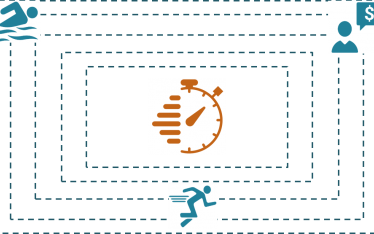Investors are capable of rational decision making. But we often see investing behavior edge on the side of irrationality. If all investors were rational, we would not see severe drops in markets and / or asset price bubbles. But we do… so let’s settle for the fact that investors are motivated by self-interest, and I would argue driven largely by fear. I am no expert in behavioral finance, but that doesn’t stop me from observing behaviors and forming opinions :-).
The four most common types of fears, and which combination dominates one’s investing style and drives their risk reward function, is what makes one investor contrarian vs. follower or risk taker vs. risk averse. This outcome doesn’t always depend on a static equation, but the fundamental drivers are generally constant.
Fear of Unknown
The relationship between risk and reward is one of the most important ones driving investors, and when it comes to unknowns investors often struggle. What is the biggest risk of investing in an emerging market, technology or asset manager? Questions that spook investors: Who else is invested there? Maybe there are great returns, but is that our mandate? At a subconscious level, one struggles with the uncertainty. The investment rigor and diligence is burdensome unless there is acceptance of the risks that come with such an investment.
Fear of Missing Out
Investors are motivated by the fact that one doesn’t want to do poorly relative to peers, rather than by a desire to avoid the risk of loss. What is the biggest risk of investing in a successful manager, or company on a strong growth path, or market that is on an upward trajectory? One is lulled and hurried into being oblivious of the risks, and as a result, the investment suffers from declining rigor and level of diligence. The outcome: Clubby deals, asset price bubbles and investor euphoria.
Fear of Loss or Failure
While investing in a losing manager or a market segment which turns out of favor, it is harder to justify fiduciary behavior, unless there is an overarching mandate to focus on such areas, a well established commitment to portfolio construction, or some strategic benefits. Optics management becomes significant. Investment rigor and a high level of diligence can be perceived as almost impossible. And often times, investors do perceive serious career risk given underperformance, even if it is caused by market-related factors.
Fear of Mediocrity
What is the biggest risk of investing in a boring manager, a mature market, or a simple and safe asset? There’s a fear of anonymity, which yields no bragging rights at the cocktail party. Recognition follows success, and often spectacular success. One rarely gains the limelight for investing in a portfolio that provides average returns, unless it’s consistent over a long time horizon. As a consequence, resulting investment rigor and level of diligence is normal, as perceived risks are minimal, but the investor interest is similarly low.
Practicing Fear Management
Successful investment needs to be simultaneously consistent and out performing, and is built on small acts. This requires conquering the various fears of investing. Investors’ investment style, and their investment outcome, is typically based on balance between how these four different fears are managed.
As much as investing is about state of mind, it’s also about external objectives and goals. Are the external factors enablers in managing the fears or disablers? What is the investment firm’s tolerance for failure? Does it value contrarian behavior? Does it have the patience to ride out the FoMo? Can it remain invested in less celebrated areas at the risk of being mediocre? Is there more focus on betting on the winner that may just be a one trick pony? Or is there acceptance for being contrarian, which requires practice and rehearsal?
Well informed investors with a superior alignment of interest and investment process, which is usually an outcome of practiced investing often are more skilled at managing these fears. In other words, the investors needs to cultivate a culture of finding a smooth and consistent investing process, and discipline to stick with it.
Happy Halloween! Will you be dressing up as a fearless Investor?



